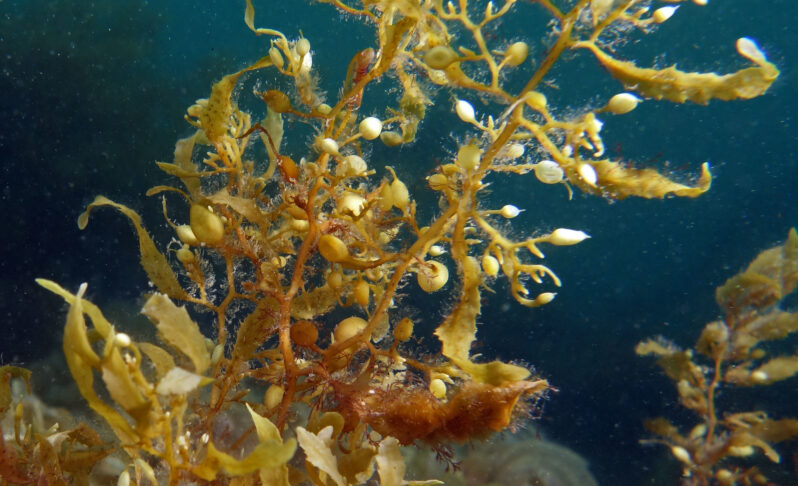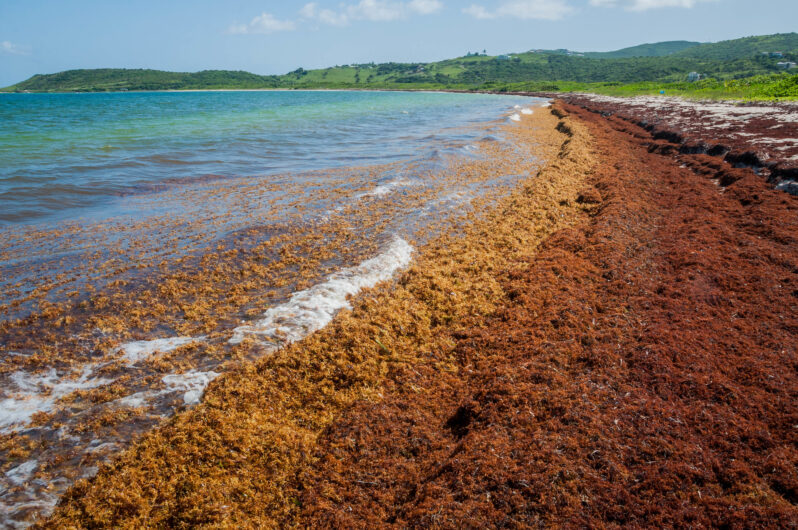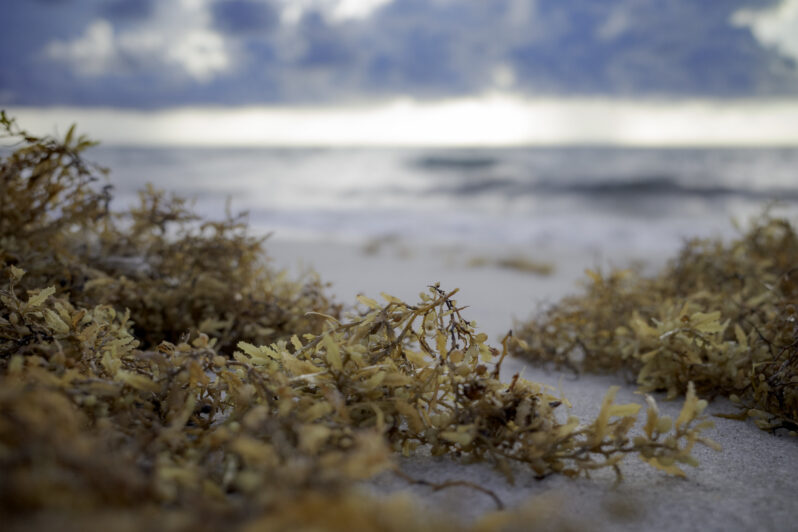Seaweed is mucking up beaches. This robot could stop it — and fight climate change – NPR

In shallow waters, sargassum can smother coral reefs and alter the water’s pH balance, killing off local seagrasses and mangroves. It can choke boat motors, constricting local fishing yields if not cutting off whole marinas. Sargassum once clogged a desalination plant so badly that residents of the U.S. Virgin Islands were told the drinking water may not be safe…
The real story behind the Atlantic’s record-breaking seaweed blobs – BBC

Along the coastlines of the Caribbean and the Gulf of Mexico, a monster is lurking. It creeps in with the tide and you’ll likely smell it before you see it. Giant clumps of sargassum seaweed have been washing ashore, choking the surf and blanketing beaches in a brown, stinking mass.
The clumps are breaking off an enormous raft of free-floating seaweed known as the Great Atlantic Sargassum Belt, which stretches 5,000 miles (8,047km) between the Gulf of Mexico and the west coast of Africa and can be seen from space…
Giant blobs of seaweed are hitting Florida. That’s when the real problem begins – NPR

It used to be that the conversation around subtropical marine life centered on declines: the death of coral beds, the diminishing variety of seagrasses, the disappearance of fish. But for now, it’s an overabundance that’s hard to miss. From Montego to Miami, an influx of algae called sargassum is leaving stinky brown carpets over what was once prime tourist sand. It’s the most sargassum researchers have tracked this early in the year. Deciding what to do with it is proving more challenging the more we learn about it — and inspiring some entrepreneurs to rethink removing sargassum altogether…
